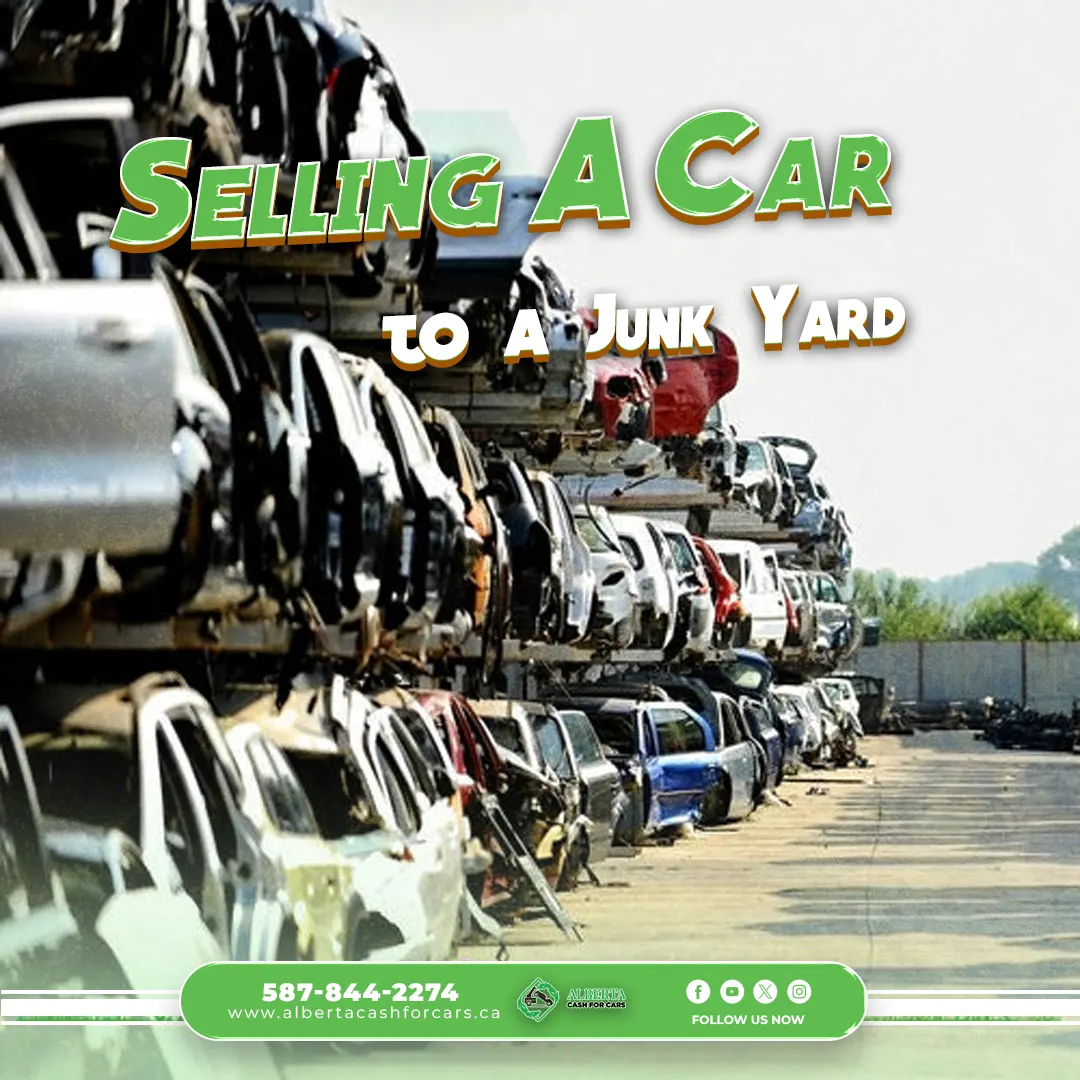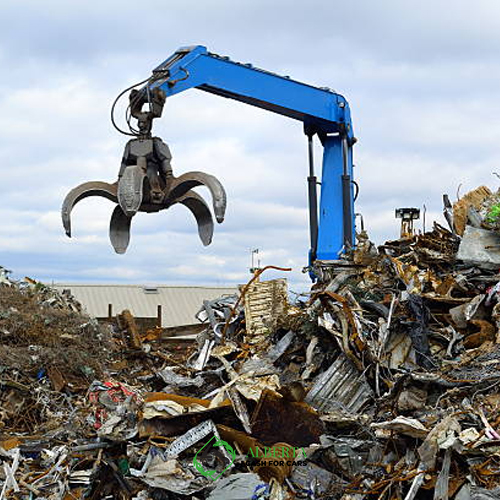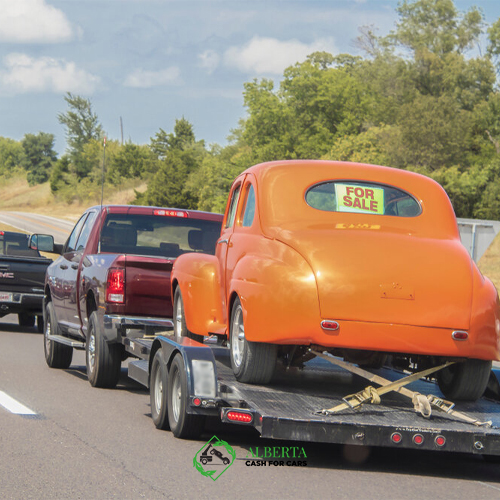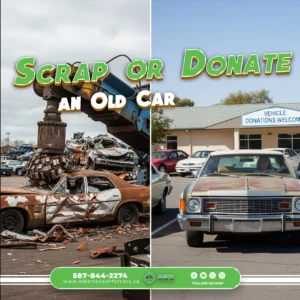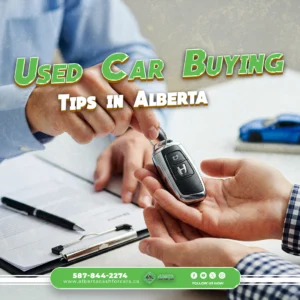After years of good service, your car may have suffered damage that makes it unusable and no longer provides you with the necessary safety. As a result, you should consider selling a car to a junkyard. The car may constantly have mechanical problems, and you must spend time and money in car repair shops. It is even possible that the life cycle of your car is over and you need a new car.
There are many reasons why people need to selling a car to a junkyard. But if you want to sell your car for any reason, do you know exactly what steps to take? Do you know the specific details of how to sell a junk car?
In the following, we would like to fully discuss the Sell a car to a junkyard in more detail.
No Hassle, Just Cash — Book Your Free Pickup or Quote Today!
Who will Buy Junk Cars?
You may have wondered where you can sell your car or who buys junk cars from you. Here we have some answers for you:
Junk car/salvage yards
Many people want to sell their cars quickly, so they take them to their local salvage yards to trade them in. Unfortunately, most salvage yards will not buy your car for what it is worth. In fact, it is in their interest to buy your car at the lowest cost so that they can sell its parts or try to sell it to another buyer.
If you are looking to get more money from selling your car, it is better to choose another method.
Metal scrap yards
You might think to yourself that your car is a big piece of metal, so you should get a decent amount of money from selling it, but unfortunately, selling your car for its scrap value will rarely lead to significant income. You are more likely to make more money the other way.
Related Post:
Ordinary car buyers
Regular car buyers are different people, and it is not clear that they will buy the car from you at the right price. Also, you have to pay for creating advertisements, online lists, and sales boards.
So what is the best way?
We will buy almost any car from our customers in cash for cars calgary. This process will be done in the best and most convenient way for you during three easy steps:
- Request an offer
- Delivery of the car from you
- Receive cash from you
Read Also: How to Get Cash for Junk Cars?
How to Sell a Car to a Junkyard?
This section has a complete guide to help you follow the Sell a Car to a Junkyard process.
Make sure you have a copy of the title
You need a car title first to sell a car to any buyer, including a junkyard. If you lose or misplace your title, you can contact your state’s DMV or BMV to get a replacement mailed to you. Protocols may vary from state to state, but you can expect to provide ID for this request and pay a small fee.
If your car has a lien, it cannot be sold to a junkyard or anyone other than a state-licensed dealer. Probably your car is unused; no dealer will be interested.
Having a clean title is all you need to sell your car. Since this device is not registered for use on the road, it will not need safety inspection or future inspection for sale to private buyers.
Related Post:
Junk Car Without Title or Registration
Call a few occupied junkyards
If you are looking to Sell a car to a junkyard, do more research. Look for local places; you can use Google and other search platforms. Limiting your review to one or two items will not do you any good.
Try to find a list of five to six and contact them. Inform the junkyards that you want to sell your car and transfer all relevant information to them. Usually, this place wants to know information such as the make, model, and year of your car and any damage that has been done to it.
Remember that you don’t have to pay to tow your car. Any reputable company will come to your place to secure the car.
Compare your offers
Try to wait and not make a quick decision before deciding where you want to sell your car. Check which offer is better, then call when you are ready to complete the sale.
If your car is still drivable, they expect you to hand it over. They will tow your car if it is no longer usable.
Prepare the car for towing
At this stage, ensure no personal items are left in your car. Because if there is anything left in it, it will not be reversible.
Complete the sales process
When your vehicle arrives at the junkyard, it usually has to be inspected. This may be done before towing.
As long as there are no problems, the dumpster will hand over the cash to you.
Keep in mind that it’s true that your car is officially changing, but you need to keep your license plate. Because it is yours and you should not transfer its ownership by car. In most states, they can be used for a new car.
Read Also: Finding Reliable Junkyards
Follow up through your state’s DMV or BMW
Depending on where you live, you may be required to report the sale of your vehicle to the state. In some states, there is a deadline for this. You should consider checking your state’s specific recipe standards to ensure you adhere to them. You should try to complete this process within two days. A sales report protects you from various responsibilities.
Consider a private sale
In many cases, sell car to junk yard is quick and hassle-free transactions, but their prices should also be considered. A major downside to sell car to junk yard is that the amount you get for selling your junk car may be few. Most of the time, you only get the value of the raw material, which is usually only a few hundred dollars.
A private sale may be more involved, but it can net you more money. Depending on the state you live in, you may need to consider things like transferring your registration and handling inspections and other compliance costs. In general, if you can find a willing buyer, it may be worth the investment.
Keep in mind that finding a buyer may take time. According to the type, make, model and year, there may not be many parts available for your car, as a result, it makes the selling process more difficult in the private market. If you want to maximize your income from selling a car, you should wait until the right buyer is found.
Read Also: Everything You Need to Know About Private Junk Car Buyers
Advantages of selling a car to a junkyard
Quick and Convenient
Selling a car to a junkyard is usually a straightforward and hassle-free process. You can save time and effort compared to advertising, meeting potential buyers, and negotiating prices.
Acceptance of any condition
Junkyards typically accept vehicles in any condition, including damaged, broken, or missing parts. You don’t have to worry about repairing the car or making it presentable for sale.
Immediate cash
Junkyards often offer immediate cash payment upon agreeing to purchase your vehicle. This can be beneficial if you need money quickly or want to avoid the hassle of waiting for payments from potential buyers.
Free towing
When you sell your car to a salvage yard, they usually provide free towing services to transport the vehicle from your location to their facility. This eliminates the need for you to arrange or pay for towing separately.
Environmental benefits
Junkyards play a vital role in recycling and salvaging salvageable parts from vehicles. By selling your car to a salvage yard, you are helping to reduce waste and promote sustainability by giving the vehicle a second life through recycling and reuse.
No annoying and expensive ads
When you sell car to junk yard, you no longer need to advertise or market it. Even if you want to sell your car to an acquaintance, you still need to try and convey this news to the buyer somehow. But if you have an old car and you want to sell it, but you don’t want to spend unnecessary time or money on advertising and marketing, sell car to junk yard is the best option.
If you’ve ever sold anything online, you know that the process of taking pictures, creating listings, and updating information can be very time-consuming. Your time is definitely more valuable than other expenses you spend So it is better to find a scrap yard and sell your car to it. In this way, you don’t need to spend a lot of time on this path.
Simplified paperwork
Selling a car to a junkyard often involves less paperwork than other selling methods. You may be required to provide the vehicle title and sign a bill of sale, but the process is generally less complex than selling to an individual buyer.
Clear space
If you have a car that’s taking up valuable space on your property, selling it to a salvage yard can help you declutter and free up space for other uses.
Why should I sell my car to junkyard that buys cars?
- We pay great cash for all junk cars including trucks, vans, crossovers and other vehicles.
- Our work process is very easy and we pay attention to all parts of this path.
- If your car is in our towing area, we will tow your car for free.
- Your car will be removed from your property.
- You can get cash on delivery of your occupied car.
- Our methods are completely compatible with the environment.
- We remove and recycle all hazardous liquids and materials.
- The remaining metal waste is used to produce new steel products.
- With the help of car recycling, the need for new production of raw materials is reduced, thus helping to preserve the environment and saving energy, water and reducing mineral waste.
When should the car be scrapped in junkyard that buys cars?
You should only consider scrapping your car in junkyard that buys cars if it is no longer usable. Maybe you think your car is old, but you can scrap it at a reasonable price.
The value of scrap cars is a small amount, so scrapping in junkyard that buys cars is the best solution. In the following, we have stated some conditions that you must follow before scrapping the car in junkyard that buys cars:
- Your car has many problems and is not drivable
- The cost of repairing your car is more than its value
- Your car is 10 years old and has traveled many kilometers
When should the car not be scrapped?
If your car is drivable and the repair bill is affordable, you should not scrap it in junkyard that buys cars. In this case, you may consider selling your car to dealers and other customers, but it is better to do the necessary negotiations and check the investment value before selling.
Required documents for sell car to junk yard
The documents required for the sell car to junk yard depend on the state in which you live. In most cases, to sell car to junk yard, a certificate of ownership, salvage certificate, non-repairable certificate or other unwanted titles are required. But in general, other documents that may be required for sell car to junk yard are stated below:
- Bill of Sale: A bill of sale is required to sell car to junk yard in any state. The bill of sale is usually a receipt from the junkyard for the purchase of the vehicle.
- Apply for junk title: Some states require owners of junk cars to apply for junk title or junk status before they can salvage and recycle the vehicle.
- Title Transfer Application: Most states require a title transfer application, which means the vehicle changes, to be completed; But usually, these items are not needed when selling a car to a junkyard.
- Lien Release: Lien release is required when the vehicle is used as collateral for a loan, the loan has been repaid and the title deed still shows the lien holder. If you have already received a new title for which the copyright holder has been removed, publishing the condition is not necessary.
Key points when reading reviews for sell car to junk yard
- Does junkyards buy unwanted cars from people or only from car auctions and used car dealers?
- Reviewing customer service experiences, including how to handle and correct negative experiences
- Transparency and integrity such as paying quoted prices for unwanted cars
- The prices offered for junk cars and whether people feel their trade is fair or not?
How long does it take to sell a car to a junkyard?
The process of sell car to junk yard does not take much time. When you get in there, you may have to wait in line for a while. By checking the list of junkyards, you can avoid going there during the peak working hours of the junkyards. When it’s your turn, the junkyard will check the condition of your car, help you complete and verify the required paperwork, and then hand you the cash. Generally, when your turn comes, the process will continue for 15 to 20 minutes.
How much cash do I get if I sell the used car to a junkyard?
The price of scrap cars is completely different based on the year of manufacture, model and conditions, as well as having a title. Also, if you want to take the car to the junkyard yourself, even though the junkyard will tow your car, it can affect the costs, of course, as we said before, our towing process will be free. An important thing to keep in mind is to take your car to a junkyard with all original parts, even if the parts are not working properly, to get the most cash. Be careful that the car engine, gearbox and car frame have the most recyclable metals.
Common Mistakes to Avoid When Selling to Junk Yard Junk Car Buyers
Selling your old or damaged car to junk yard junk car buyers can be a quick and profitable solution, but it’s essential to navigate the process carefully to ensure you get the best deal. Here are some common mistakes to avoid to make the most of your transaction:
1. Not Removing Personal Items
One of the most easily overlooked but crucial steps when selling your car to junk yard junk car buyers is to thoroughly remove all personal items from the vehicle. It’s natural to accumulate personal belongings in your car over time, and it’s easy to forget about them when you’re focused on selling your car. However, leaving personal items behind can lead to unnecessary hassles.
Before the buyer arrives to pick up your vehicle, take the time to search through every nook and cranny, including the glove compartment, center console, and trunk. Check for items like sunglasses, CDs, phone chargers, and important documents. Not only does this ensure you don’t lose anything valuable, but it also prevents any potential issues with the buyer later.
2. Not Researching the Value
Selling a junk car doesn’t mean you have to settle for the first offer that comes your way. To get the best deal possible, it’s crucial to research the value of your vehicle beforehand. Factors like the make, model, year, and condition of your car all play a role in determining its worth.
Several online tools and resources can help you estimate your car’s value, even in its current condition. Some websites provide valuable insights into the market value of vehicles, including those that are damaged or non-functional. By having a ballpark figure in mind, you’ll be better equipped to negotiate with potential buyers and ensure you receive a fair price for your car.
3. Not Understanding the Buyer’s Policies
Every junk yard junk car buyer operates differently, and it’s essential to understand their policies and procedures before finalizing the sale. Common questions to ask include:
- Towing Services: Does the buyer offer free towing services, or will you be responsible for arranging transportation of the vehicle to their location?
- Title Requirements: Does the buyer require a title to complete the transaction? While having a title is ideal, some buyers may work with you if you don’t have one.
- Payment Method: How and when will you receive payment for your car? Some buyers offer cash on the spot, while others may prefer checks or electronic transfers.
- Licensing and Compliance: Ensure that the buyer is licensed and adheres to local regulations. Request proof of licensing if necessary to avoid any potential legal issues.
By understanding the buyer’s policies and asking these questions upfront, you can avoid surprises and ensure a smooth and transparent transaction.
Read Also: Unspoken Rules and Junkyard Etiquette-Tips

